Exploring Hong Kong History Timeline: A Historical Perspective
Have you ever considered the history of Hong Kong? It aids in clarifying why it remains such a vibrant location today. It started as a tiny fishing community and became a significant financial hub. This article explores the fascinating history of Hong Kong and its distinct position as a Special Administrative Region (SAR). It will explore whether Hong Kong qualifies as a country, explain the significance of a Special Administrative Region, and present a historical timeline of its events. You will discover its period as a British colony, significant occurrences that facilitated its return to China in 1997, and how to represent this history with MindOnMap. By the conclusion, you will comprehend Hong Kong's unique history and various methods to depict it!

- Part 1. Is Hong Kong a Country
- Part 2. Make a Hong Kong History Timeline
- Part 3. How to Make a Hong Kong History Timeline Using MindOnMap
- Part 4. Why the UK Took Hong Kong
- Part 5. FAQs about Hong Kong History Timeline
Part 1. Is Hong Kong a Country
Hong Kong frequently piques people's interest regarding its political climate. Is it a country or something else? The answer is that it is a Special Administrative Region (SAR) of China, setting it apart as a distinct part of the People's Republic of China (PRC).
What exactly is a Special Administrative Region?
Hong Kong is one of China's two SARs (the other being Macau). It possesses its own:
• Basic Law: A compact constitution. It clarifies the systems of Hong Kong. They are lawful, governmental, and financial.
• Currency: The Hong Kong Dollar is distinct from China's Renminbi.
• Immigration Framework: Hong Kong manages its borders.
• Judicial Independence: Its courts operate autonomously, applying legal concepts derived from British common law.
How Did Hong Kong Transform into a SAR?
Hong Kong became the Special Administrative Region when it returned to China on July 1, 1997. The British ruled it for more than 150 years.
• The Sino-British Joint Declaration (1984): This agreement between China and the UK outlined the transfer of Hong Kong. It assured that Hong Kong would experience significant freedom for 50 years after 1997.
• The Basic Law (1990): This acts as Hong Kong's constitution, ensuring personal rights and freedoms, permitting the economy to function autonomously, and preserving a separate legal system.
Why Is Hong Kong Not Considered a Country?
Although Hong Kong operates independently in numerous aspects, it is not considered a separate country. Here’s the reason:
• Beijing manages its international relations and defense.
• Hong Kong is not a separate country at the United Nations or other international gatherings.
Hong Kong's SAR status merges its unique history with its position between China and the global community. This mix of liberty and community makes Hong Kong a fascinating case of how contemporary governance and identity can function.
Part 2. Make a Hong Kong History Timeline
Hong Kong’s fascinating history is filled with cultural, political, and economic changes. Here’s a quick timeline of the events that helped shape Hong Kong into its unique place today.
Before Colonial Era
• 200 BC: Hong Kong belonged to the Baiyue region, inhabited by early Chinese inhabitants.
• 111 BC: The Han Dynasty incorporated Hong Kong into its realm.
• 13th Century: During the collapse of the Southern Song Dynasty, individuals sought safety in Hong Kong.
Colonial Era
• 1839-1842: The First Opium War began between Britain and China.
• 1842: The Treaty of Nanking transferred Hong Kong Island to Britain, initiating British governance.
• 1860: The Second Opium War concluded with the Treaty of Beijing. It placed the Kowloon Peninsula under British authority.
• 1898: Britain obtained a 99-year lease for the New Territories, extending Hong Kong's area.
Second World War and Japanese Control
• 1941-1945: During WWII, Japan took control of Hong Kong. Residents found it difficult.
Post-Conflict Expansion
• 1945: British control resumed following the defeat of Japan.
• 1950s-1970s: Hong Kong emerged as a center for manufacturing. It occurred because refugees and businesspeople were escaping China after the Communist revolution.
Financial Transformations
• 1980s: The economy transformed from production to a global financial and services giant.
Back to China and the Special Administrative Region Era
• 1997: On July 1, Hong Kong was returned to China and became a SAR.
• 2003: Major demonstrations erupted in opposition to a suggested Article 23 security law.
• 2014: The Umbrella Movement arose, demanding democratic reforms.
• 2019: Demonstrations broke out concerning a suggested extradition law. They developed into larger pro-democracy protests.
• 2020: Beijing implemented a national security law, altering Hong Kong's political landscape.
Today
• 2021: Modifications to Hong Kong's voting system solidified Beijing’s control.
• 2023: Hong Kong continues to navigate its position as an international financial center alongside China's larger objectives.
This timeline illustrates how Hong Kong has evolved throughout the years. It has become a distinctive blend of culture and history.
Share link: https://web.mindonmap.com/view/097dd892c504d7a0
Part 3. How to Make a Hong Kong’s History Timeline Using MindOnMap
Creating a history of Hong Kong's timeline can be fun to see its interesting past. With MindOnMap, you can sort historical events into a simple and attractive layout. MindOnMap is an easy-to-use online tool for making diagrams, mind maps, and timelines. It’s super user-friendly, so it’s great for students, teachers, and anyone who loves history. The tool has customizable templates. It lets you collaborate and easily save and share your work.
MindOnMap Features for Making Timelines
• Pick from different timeline designs to get your project going.
• Add and organize events without any hassle.
• Change colors, fonts, and icons to make key events stand out.
• Keep your work safe and access your timeline from anywhere.
• Share your timeline with others for group projects or to get feedback.
How to Make a Hong Kong History Timeline with MindOnMap
Go to the MindOnMap website and choose Create Online to explore the tool.
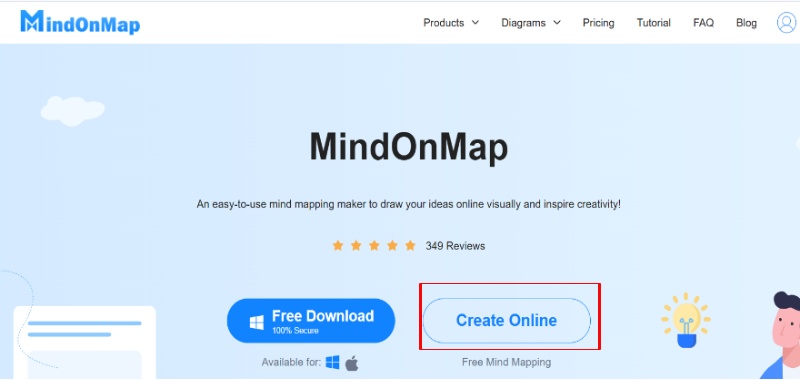
From the main page, click the New button and select the Fishbone template for an easy Hong Kong timeline.
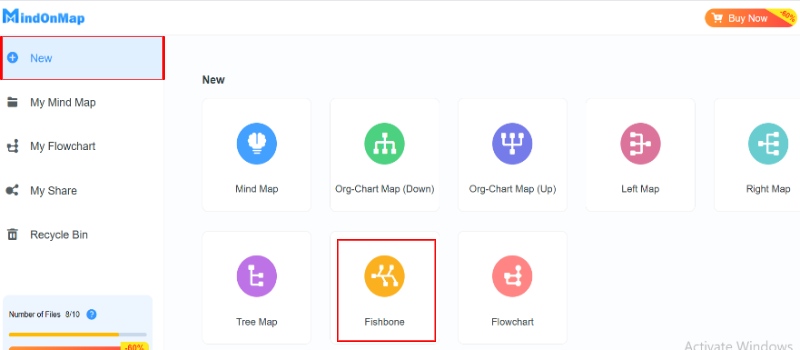
You will see the central topic, which will change to a Hong Kong history timeline for your main topic. You can also add the Topic and Subtopic for key events and dates for your timeline.
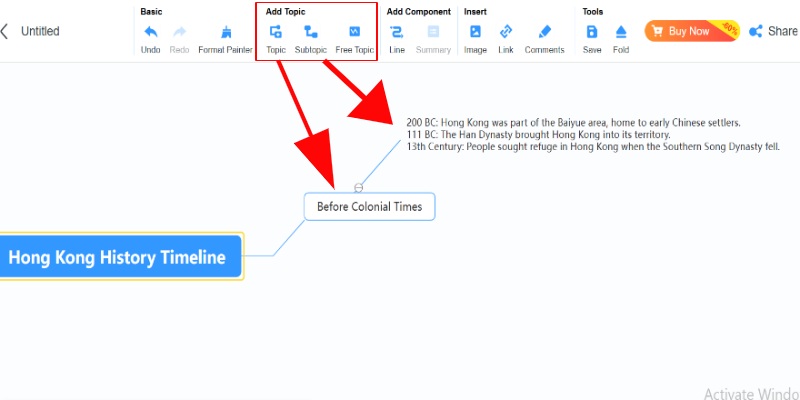
Use different colors to show periods (e.g., the pre-colonial, colonial, and SAR eras). Add pictures and change the fonts to highlight important milestones.
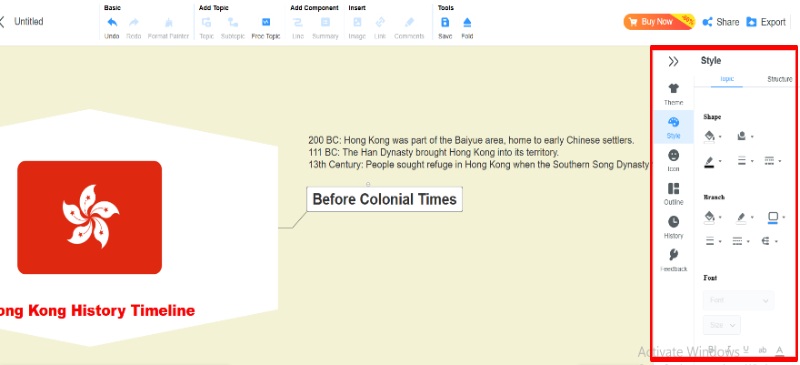
Make sure your timeline is accurate and easy to read. Click the Share button to save your work in MindOnMap’s cloud with a link.
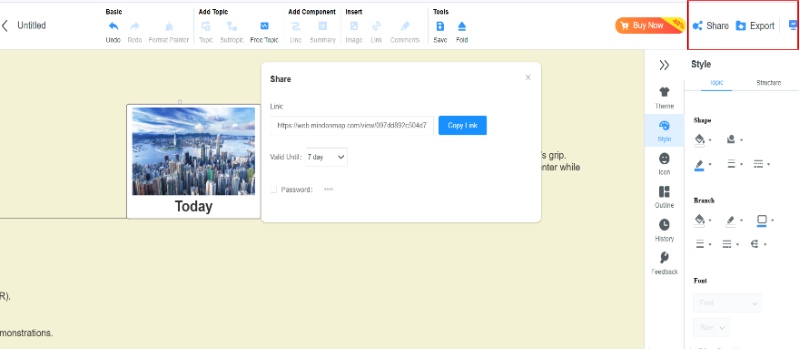
In addition to clarifying the region’s history, MindOnMap is also a good idea for creating a work breakdown structure, sipoc diagram, etc. Try it to make what is in your mind vivid now.
Part 4. Why the UK Took Hong Kong
Hong Kong's history as a British colony and its return to China are important parts of its story. Political, economic, and cultural factors continue to impact the region today.
Why Did the UK Take Hong Kong?
The British takeover of Hong Kong happened because of the Opium Wars, which trade issues and colonial desires:
First Opium War (1839–1842)
• The Opium Wars caused the British takeover of Hong Kong. They were due to trade issues and colonial desires.
• To balance this, Britain started sending opium to China, which led to a lot of addiction.
• The Qing government in China banned opium and destroyed British stocks. It started the First Opium War.
• This war ended with the Treaty of Nanking (1842), which handed over Hong Kong Island to Britain.
Second Opium War (1856–1860)
• This war aimed to further open China to British trade and ended with the Treaty of Beijing (1860).
• This agreement gave Britain control over the Kowloon Peninsula and Stonecutters Island.
Expanding British Control (1898)
• Britain signed a 99-year lease for the New Territories. It greatly increased its hold on Hong Kong.
When Did Hong Kong Return to China?
Hong Kong stayed under British rule until July 1, 1997. This change came after a lot of discussions and agreements:
Sino-British Joint Declaration (1984)
The UK and China agreed that Hong Kong would return to Chinese control in 1997.
• China promised to keep Hong Kong’s capitalist system, legal independence, and lifestyle for 50 years under the "One Country, Two Systems" idea.
Handover Ceremony (July 1, 1997)
This event signified the end of British control and the start of Hong Kong as a Special Administrative Region (SAR) of China.
Legacy and Implications
British rule helped modernize Hong Kong’s infrastructure, education, and governance, but it also sparked ongoing debates about sovereignty and identity.
The return to China brought back territorial unity for Beijing but created complications in Hong Kong’s politics, as seen in the ongoing struggles over its freedoms and autonomy.
This part of Hong Kong’s history highlights its unique position as a link between East and West, shaped by colonialism and its return to Chinese control. Though it is only a small section of world history timeline, it is still important.
Part 5. FAQs about Hong Kong History Timeline
Is Hong Kong a country?
No, Hong Kong isn’t a country. It’s a Special Administrative Region (SAR) of China, which means it operates under the "One Country, Two Systems" idea. It allows Hong Kong to keep its laws, economy, and government separate from the rest of China.
How can I make a timeline of Hong Kong's history?
Using tools like MindOnMap, you can easily assemble a cool and detailed timeline. It helps you sort out events, tweak the visuals, and share what you've made without hassle.
What does "One Country, Two Systems" mean?
It means that even though Hong Kong is part of China, it maintains its capitalist economy, separate legal system, and individual rights, which are different from mainland China's socialist system.
Conclusion
The timeline of Hong Kong's history shows how it has adjusted and succeeded through various political and economic changes. Its past helps us appreciate its unique identity and culture, and it also reveals its role in the world.










